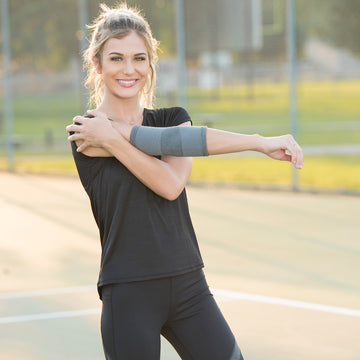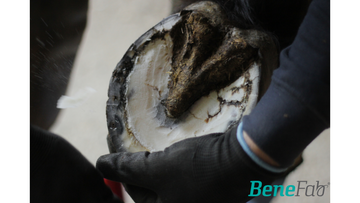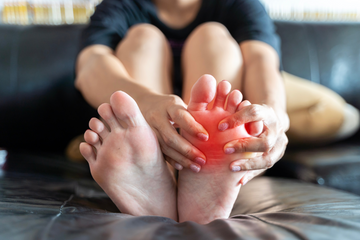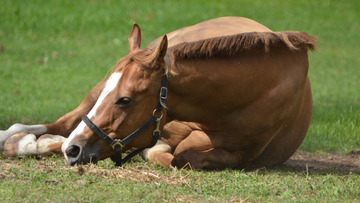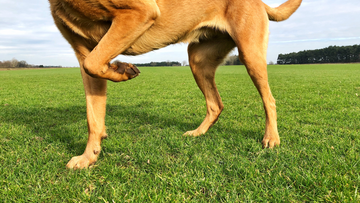Hoof abscesses are a common problem in horses. A hoof abscess is an infection caused by bacteria buildup from different external factors. In many cases, hoof abscesses are easily treatable and do not require an expensive trip to the vet, but complications with abscesses can become long-lasting and severe, resulting in lameness. Most times, that lameness onset is severe and without much warning.

Fortunately, causes of abscesses are fairly straightforward and should not require expensive imaging for diagnosis or treatment of the abscess, however some exceptions do exist.
Abscesses are often compared to as whitehead pimples. A pimple has a little bubble of pus under the skin and can be painful. It might be sore even before it is visible. The fastest way to get rid of this infection, is to 'pop' the pimple and let the pus drain. The pressure is relieved which leads to pain relief.
A hoof abscess is essentially the same idea. It starts with an infection, which the body fights with white blood cells and inflammatory mediators. As the infection, inflammation, and white blood cells expand it causes increasing pressure.
Some horses may not show signs of lameness and the abscess will rupture on its own, however, situations do vary.
Most abscesses begin with bacteria entering the sole-wall junction. When the hoof wall/sole is weakened, it makes it easier for bacteria to enter and cause internal hoof injuries, such as bruising, resulting in an abscess.
Listed below are 6 common causes of a hoof abscess:
- Wet and dry environmental conditions. Dry environmental conditions will dry out the hoof and cause shrinking. This can result in tiny cracks and fissures in the sole-wall junction. Contrary to dry conditions, wet weather will allow bacteria to invade the hoof and cause an abscess.
- Piercing wounds. A horse stepping on a sharp object such as a nail, rock, or broken glass can puncture the sole and allow bacteria to pack up and seal over. An abscess will usually show 2-4 days later.
- “Close” nails. A horseshoe nail that is nailed too close or into the sensitive inner structures can allow bacteria in that cause an abscess.
- Hot shoe on a thin sole. A thin sole and a hot shoe are a risky combination. If a hot shoe is placed on a thin sole, it can cause a thermal injury to sensitive tissues.
- Poor confirmation/hooves. Poor confirmation can cause stress on the feet. If bending stress is put on the sole-wall junction, a crack will occur and can be contaminated.
- Cleanliness. Dirty stalls or paddocks that are wet contain lots of bacteria. This can enter the foot and cause an abscess.
Above all, if your horse gets a hoof abscess, remain calm. Remember these are very common.
Keep in mind these 6 causes to help prevent abscesses in the future. As long as you take the right precautionary measures going forward, you can eliminate a lot of risk to ensure your horse is kept happy and healthy.
For more information on abscesses, click here.

